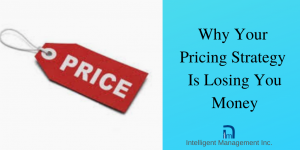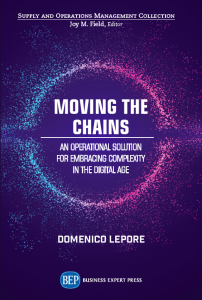
A company in the furniture business lost a good repeat customer a few months back. They were devastated because they were already selling considerably less than previous years. Their customer wanted to a pay a price for their product that, according to traditional cost accounting, was not a price that allowed them to make any money. They were wrong. When we showed them that every business is a system and every system has a constraint and there is an accurate way to calculate a profitable price based on their constraint, they were at first horrified that they’d let the customer slip and then excited because they now knew they had a way to get that customer back (they just did) and also, they knew they had just gained a powerful competitive edge over everyone else in their sector.
Your Pricing Strategy needs to take a fundamental factor into account
Whatever your activity, whether it is manufacturing machine parts or providing a design service, something in your system is a constraint, i.e. a scarce resource, and this will dictate the pace at which you are able to produce what you do. Setting a price without taking into account how much “constraint time” the product occupies means you are missing the point. The Theory of Constraints developed by Dr. Eli Goldratt teaches us that we can use what seems like a “limitation” to our strategic advantage. By making sure that the constraint functions effectively, you can maximize what your business is able to produce.
A mind-boggling exercise: P&Q
To demonstrate the impact of understanding the role of a constraint in a business and how it affects pricing strategy, Dr. Goldratt came up with an exercise he calls ‘P&Q” described in his book ‘The Haystack syndrome’. Over the years we have shared this exercise with hundreds of executives and entrepreneurs and the effect is always exhilarating. So what is the P&Q exercise? It is a simulation of what happens to the profitability of a plant when it reacts to a series of demands from the market. When the constraint comes into the picture, everyone who does the exercise is flabbergasted.
P&Q forces you to come to terms with what determines profitability: the pace at which the system generates cash through sales. P&Q is the most convincing and perception-altering way that you can turn any limiting factor into an opportunity by changing the way you view the resources in your system. P&Q developed by Dr. Goldratt in 1980s exemplifies our inability to cope with rapid changes and how much we need to learn how to understand complexity. P&Q has been shown to hundreds of thousands of people all over the world and continues to create a sense of disorientation, especially in those rooted in the tragic fallacy of cost accounting. P&Q will only remain a classroom exercise if we don’t come to grips with our need to start relying more on a method than hunches, more on knowledge (what we know and is valid) than superstition (what we believe that is instead wrong). P&Q rings the death knell of cost accounting and calls for a dramatic overhaul of the role of the controller. Indeed, P&Q needs to be understood in the context of managing complexity and as an integral part of a fundamental rethinking of what it means to manage for sustainable growth.

Don’t let your pricing strategy lose you more money
Last week we we introduced the entrepreneurs following our course for Systemic Management at the University of Venice to P&Q and we gave them a simulator to experiment with. In this way they could see live how much money the plant in the simulator could make as soon as they had figured out how to work with the constraint. They were so enthralled we had to extend the session.
There’s a lot of literature on how to price a product or service, but there’s one thing that everyone should know: any pricing strategy that does not take into account the constraint in your business is not only wrong, it’s probably losing you business. When people use traditional methods based on cost accounting to calculate price, they are making the same mistake that most companies do. And that means there is a huge competitive advantage when you understand that there is a much better way to figure out how to set a price that actually makes you money.
SCHEDULE AN INTRODUCTORY CALL WITH US ‘






Leave a Reply